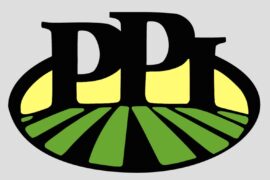The North-Western European Potato Growers (NEPG) estimates that this year’s total harvest of consumption potatoes in four of the five top spud producing countries in the European Union will amount to at least 20% lower than the 2017 crop, weighing in at approximately 20 million tons less than last year.
As statistics for Great Britain are not yet available, the NEPG’s harvest forecast is based only on yields in the Netherlands, Belgium, Germany and France. Figures for Britain won’t be tabulated until the end of this year, as harvesting is still ongoing in the UK.
In all of the “Big 5” potato producing countries there exists an enormous variation between irrigated and non-irrigated fields, as well as between varieties and locations. Trial digs on the continent show yields of between 18 and 80 tons per hectare.
Across the continent, the weather was very hot and dry during the summer. In the regions in which irrigation was possible, the situation appears to be relatively better. However, in most cases, croplands have not been irrigated, either due to the lack of structures, or due to government bans that favored non-agricutlural uses of the available water resources.
The average yields in the four countries assessed thus far are the lowest in many years, and have charted 13.1% lower than the five-year average. The area under cultivation in the “Big 5” potato countries increased by 1% this year to 595,587 hectares.
Belgium Down 29%
In Belgium the actual estimation is 38.1 tons per hectare, a decrease of 29% compared with last season and 24% with the 5-year average. Not only did the Bintje variety underperform, but so did other processing varieties. It is important to note that no more than 3% of the total potato area is irrigated in Belgium. Other countries report 14% to 20% lower yields.
Tuber Quality
While potato size was smaller in general, the main quality issue this year is secondary growth, with as a consequence results in low dry mater content, floaters and glassy potatoes, and sugar ends on chips. These problems primarily affect the Bintje, but other main chipping and table varieties show similar problems though at a lesser extent. These quality issues present huge problems to farmers, traders and processors. Additional costs must be borne for sorting out (washing, salt bath, etc.) and processing all batches with problematic characteristics. Therefore the NEPG estimates that the final crop suitable for processing or fresh table use will much lower and could be the lowest yield in the last decade.
As the demand for raw material for processing has increased by 15% since 2012, it is clear that actual and expected free market prices will remain at a high level. The NEPG will publish the final harvest figures at the end of this year.
2019 Campaign
For the coming planting campaign, because of the lower yields for the production of potato seeds in 2018, the availability on some varieties – mainly the biggest tuber sizes used in the processing industry – could be a challenge for earliest varieties. The first indications on contract prices for early varieties show a significant increase.
“Finally, more and more restrictions are observed on crop protection products,” noted NEPG. “This can lead to a rise in the cost of production and/or put more risk on the potato growing sector.”





